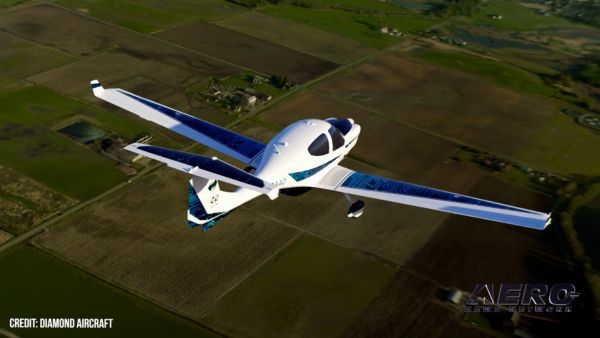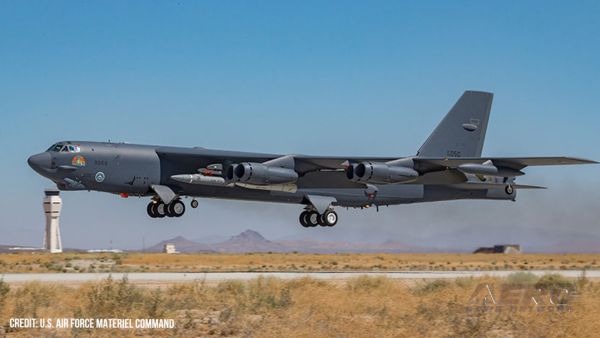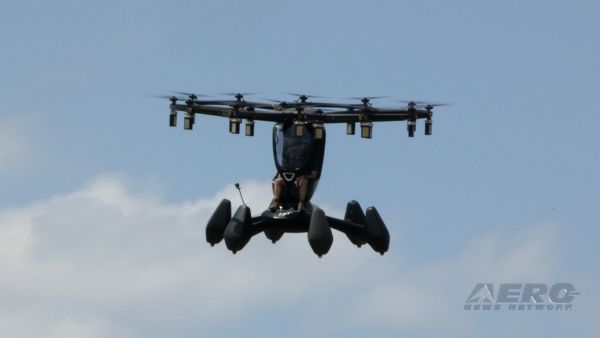NASA Researchers to Adapt Technologies to Aviation
Security
The NASA Aviation Safety and Security Program (AvSSP), managed
by NASA's Langley Research Center in Hampton (VA), is focusing on
areas where NASA expertise could make a significant contribution to
security:
-
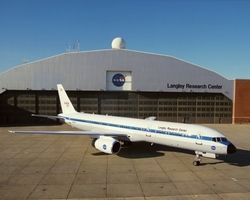 Hardening of aircraft and their systems
Hardening of aircraft and their systems
- Secure airspace operation technologies
- Improved systems to screen passenger and cargo information
- Sensors designed to better detect threats
"NASA wants to use its decades of aeronautics research know-how
to make airliners and their passengers more secure in years to
come. We're looking at long-term, futuristic technologies that
could be built into next-generation aircraft designs as well as
trying to determine how new technologies might be able to be
incorporated into current airplanes," said Beth Plentovich,
Aviation Security project planning lead at NASA Langley.
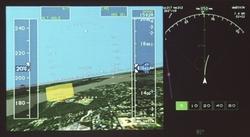 Initially, much of the effort will center on
aircraft and systems hardening. Some of that research will look at
an airborne operational concept that would automatically keep
airplanes away from national landmarks, security targets and other
"protected areas" (highlighted).
Initially, much of the effort will center on
aircraft and systems hardening. Some of that research will look at
an airborne operational concept that would automatically keep
airplanes away from national landmarks, security targets and other
"protected areas" (highlighted).
NASA demonstrated one concept -- an automatic protected area
avoidance system -- using its 757 Airborne Research Integrated
Experiments System (ARIES) aircraft in November 2001, about two
months after the September 11 terrorist attacks. Engineers
integrated two aviation safety technologies that are under
development at NASA Langley to create an automatic protected area
avoidance system on board the ARIES flying laboratory.
Researchers adapted "refuse to crash" computer software being
developed by the Aviation Safety and Security Program's Single
Aircraft Accident Project. They combined it with a 3-D computerized
terrain cockpit database created by AvSSP's Synthetic Vision
Systems project.
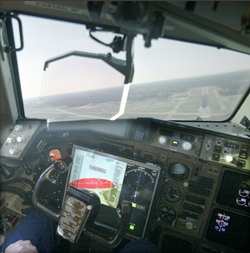 During the demonstration, the 757 flew over NASA's
Wallops Flight Facility in Virginia, but on synthetic vision
screens inside the aircraft it looked like the plane was flying
approaches into Reagan Washington National Airport. As the plane
neared one of four protected areas built into the simulation, a
warning dome appeared over the landmark on the experimental
Synthetic Vision cockpit display (right). The dome changed from
yellow to red the closer the pilot got to the simulated protected
area. If the research pilot didn't steer clear after the red
warning was shown during the limited, very controlled flight
experiment, the "refuse to crash" system veered the plane away.
[How soon before we can get that system in trainers?
--ed.]
During the demonstration, the 757 flew over NASA's
Wallops Flight Facility in Virginia, but on synthetic vision
screens inside the aircraft it looked like the plane was flying
approaches into Reagan Washington National Airport. As the plane
neared one of four protected areas built into the simulation, a
warning dome appeared over the landmark on the experimental
Synthetic Vision cockpit display (right). The dome changed from
yellow to red the closer the pilot got to the simulated protected
area. If the research pilot didn't steer clear after the red
warning was shown during the limited, very controlled flight
experiment, the "refuse to crash" system veered the plane away.
[How soon before we can get that system in trainers?
--ed.]
"The experiment on board NASA's 757 was just a demonstration of
a hypothetical concept. To implement this kind of system in today's
airline operations would be very challenging. Much more research is
needed, but the test showed that new technology may some day be
able to help improve aviation security," added Plentovich.
Other security applications include technology to detect and
track unusual air traffic movements. That work is part of the NASA
Airspace Systems Program managed from NASA's Ames Research Center
at Moffett Field (CA). NASA will also conduct research into the
development of a system to report security incidents.
 Airborne 04.16.24: RV Update, Affordable Flying Expo, Diamond Lil
Airborne 04.16.24: RV Update, Affordable Flying Expo, Diamond Lil ANN's Daily Aero-Term (04.20.24): Light Gun
ANN's Daily Aero-Term (04.20.24): Light Gun Aero-News: Quote of the Day (04.20.24)
Aero-News: Quote of the Day (04.20.24) Aero-News: Quote of the Day (04.21.24)
Aero-News: Quote of the Day (04.21.24) ANN's Daily Aero-Term (04.21.24): Aircraft Conflict
ANN's Daily Aero-Term (04.21.24): Aircraft Conflict



